
The House of Bourbon is a dynasty that originated in the Kingdom of France as a branch of the Capetian dynasty, the royal House of France. Bourbon kings first ruled France and Navarre in the 16th century. A branch descended from the French Bourbons came to rule Spain in the 18th century and is the current Spanish royal family. Further branches, descended from the Spanish Bourbons, held thrones in Naples, Sicily, and Parma. Today, Spain and Luxembourg have monarchs of the House of Bourbon. The royal Bourbons originated in 1272, when Robert, the youngest son of King Louis IX of France, married the heiress of the lordship of Bourbon. The house continued for three centuries as a cadet branch, serving as nobles under the direct Capetian and Valois kings.

Charles VIII, called the Affable, was King of France from 1483 to his death in 1498. He succeeded his father Louis XI at the age of 13. His elder sister Anne acted as regent jointly with her husband Peter II, Duke of Bourbon until 1491, when the young king turned 21 years of age. During Anne's regency, the great lords rebelled against royal centralisation efforts in a conflict known as the Mad War (1485–1488), which resulted in a victory for the royal government.
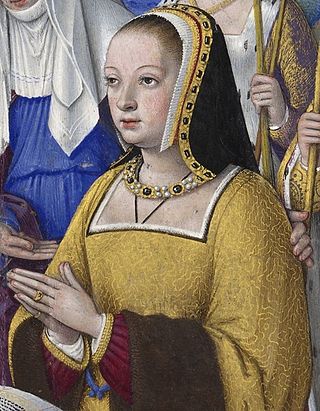
Anne of Brittany was reigning Duchess of Brittany from 1488 until her death, and Queen of France from 1491 to 1498 and from 1499 to her death. She was the only woman to have been queen consort of France twice. During the Italian Wars, Anne also became Queen of Naples, from 1501 to 1504, and Duchess of Milan, in 1499–1500 and from 1500 to 1512.

Duke of Bourbon is a title in the peerage of France. It was created in the first half of the 14th century for the eldest son of Robert of France, Count of Clermont, and Beatrice of Burgundy, heiress of the lordship of Bourbon. In 1416, with the death of John of Valois, the Dukes of Bourbon were simultaneously Dukes of Auvergne.

Charles II, Duke of Bourbon, was Archbishop of Lyon from an early age and a French diplomat under the rule of Louis XI of France. He had a 2-week tenure as Duke of Bourbon in 1488, being ousted afterward by his younger brother and successor, Peter II, Duke of Bourbon.

Suzanne de Bourbon was suo jure Duchess of Bourbon and Auvergne from 1503 to her death alongside her husband Charles III.

Gilbert of Bourbon-Montpensier, Count of Montpensier, was a member of the House of Bourbon. He was the son of Louis I, Count of Montpensier and Gabrielle de La Tour d'Auvergne, Count of Montpensier and Dauphin d'Auvergne. He was appointed to the Order of Saint Michael by King Charles VIII of France in October 1483.
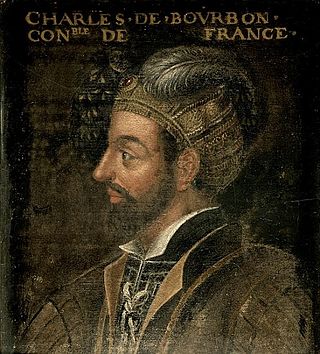
Charles III, Duke of Bourbon was a French military leader, the count of Montpensier, Clermont and Auvergne, and dauphin of Auvergne from 1501 to 1523, then duke of Bourbon and Auvergne, count of Clermont-en-Beauvaisis, Forez and La Marche, and lord of Beaujeu from 1505 to 1521. He was also the constable of France from 1515 to 1521. Also known as the Constable of Bourbon, he was the last of the great feudal lords to oppose the king of France. He commanded the troops of Holy Roman Emperor Charles V in what became known as the Sack of Rome in 1527, where he was killed.

Duke of Châtellerault is a French noble title that has been created several times, originally in the Peerage of France in 1515. It takes its name from Châtellerault, in the Vienne region.
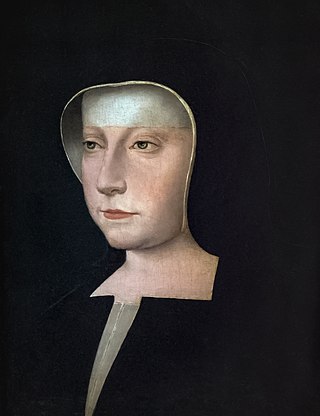
Louise of Savoy was a French noble and regent, Duchess suo jure of Auvergne and Bourbon, Duchess of Nemours and the mother of King Francis I and Marguerite of Navarre. She was politically active and served as the regent of France in 1515, in 1525–1526 and in 1529, during the absence of her son.

Anne of France was a French princess and regent, the eldest daughter of Louis XI by Charlotte of Savoy. Anne was the sister of Charles VIII, for whom she acted as regent during his minority from 1483 until 1491. During the regency she was one of the most powerful women of late fifteenth-century Europe, and was referred to as "Madame la Grande". Between 1503 and 1521, she also acted as de facto regent of the Duchy of Bourbon during the reign of her daughter Suzanne, Duchess of Bourbon.

In the 11th and 12th centuries the Countship of Penthièvre in Brittany belonged to a branch of the sovereign House of Brittany. It initially belonged to the House of Rennes. Alan III, Duke of Brittany, gave it to his brother Eudes in 1035, and his descendants formed a cadet branch of the ducal house.

The House of Montfort-Brittany was a Breton-French noble family, which reigned in the Duchy of Brittany from 1365 to 1514. It was a cadet branch of the House of Dreux; it was thus ultimately part of the Capetian dynasty. It should not be confused with the older House of Montfort which ruled as Counts of Montfort.
The precise style of French sovereigns varied over the years. Currently, there is no French sovereign; three distinct traditions exist, each claiming different forms of title.

The Mad War was a late medieval conflict between a coalition of feudal lords and the French monarchy. It occurred during the regency of Anne of Beaujeu in the period after the death of Louis XI and before the majority of Charles VIII. The war began in 1485 and ended in 1488.

John IV of Chalon-Arlay or John of Chalon was a prince of Orange and lord of Arlay. He played an important role in the Mad War, a series of conflicts in which aristocrats sought to resist the expansion and centralisation of power under the French monarch.
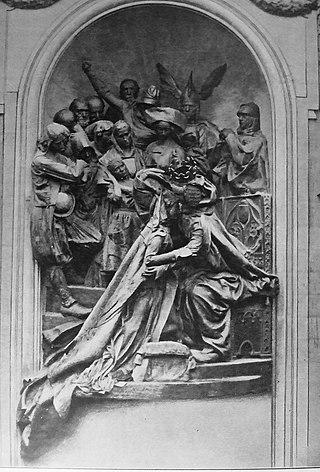
The union of the Duchy of Brittany with the Crown of France was the culmination of a political process begun at the end of the 15th century in the wake of the Mad War. It resulted in the Edict of Union of 13 August 1532 and the incorporation of the duchy into the Crown lands of France, a critical step in the formation of modern-day France.
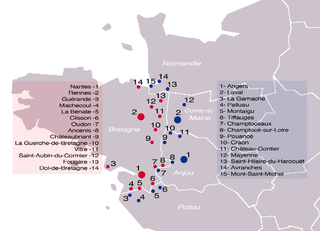
The French–Breton War lasted from 1487 to 1491. The cause of this war was the approaching death of the Breton Duke Francis II of Brittany, who had no clear successor. If not resolved, this meant a resumption of issues from a previous War of the Breton Succession (1341–1364), which had rival claimants allying with England or France, resulting in an ambiguous peace treaty that failed to prevent future succession disputes.






















